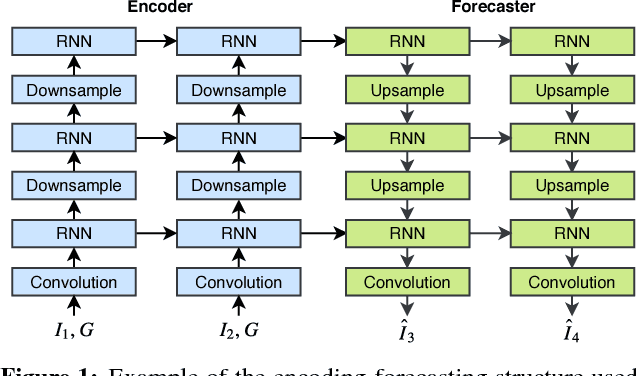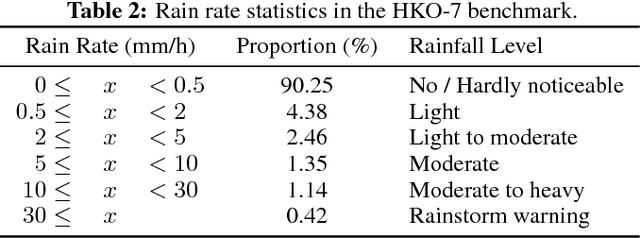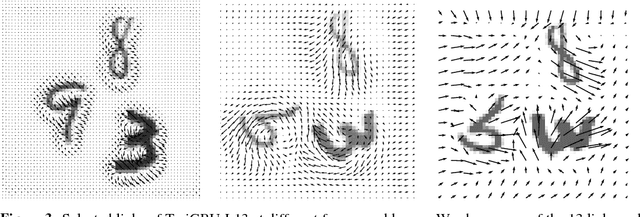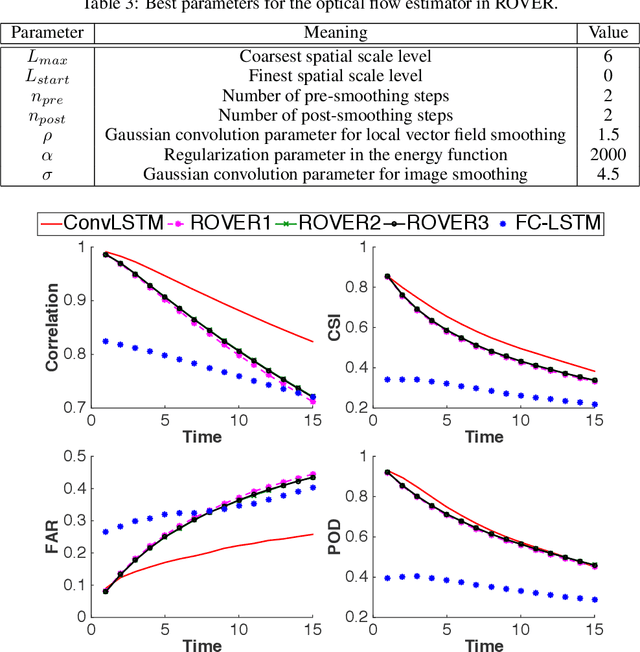Wai-kin Wong
Deep Learning for Precipitation Nowcasting: A Benchmark and A New Model
Oct 05, 2017



Abstract:With the goal of making high-resolution forecasts of regional rainfall, precipitation nowcasting has become an important and fundamental technology underlying various public services ranging from rainstorm warnings to flight safety. Recently, the Convolutional LSTM (ConvLSTM) model has been shown to outperform traditional optical flow based methods for precipitation nowcasting, suggesting that deep learning models have a huge potential for solving the problem. However, the convolutional recurrence structure in ConvLSTM-based models is location-invariant while natural motion and transformation (e.g., rotation) are location-variant in general. Furthermore, since deep-learning-based precipitation nowcasting is a newly emerging area, clear evaluation protocols have not yet been established. To address these problems, we propose both a new model and a benchmark for precipitation nowcasting. Specifically, we go beyond ConvLSTM and propose the Trajectory GRU (TrajGRU) model that can actively learn the location-variant structure for recurrent connections. Besides, we provide a benchmark that includes a real-world large-scale dataset from the Hong Kong Observatory, a new training loss, and a comprehensive evaluation protocol to facilitate future research and gauge the state of the art.
Convolutional LSTM Network: A Machine Learning Approach for Precipitation Nowcasting
Sep 19, 2015



Abstract:The goal of precipitation nowcasting is to predict the future rainfall intensity in a local region over a relatively short period of time. Very few previous studies have examined this crucial and challenging weather forecasting problem from the machine learning perspective. In this paper, we formulate precipitation nowcasting as a spatiotemporal sequence forecasting problem in which both the input and the prediction target are spatiotemporal sequences. By extending the fully connected LSTM (FC-LSTM) to have convolutional structures in both the input-to-state and state-to-state transitions, we propose the convolutional LSTM (ConvLSTM) and use it to build an end-to-end trainable model for the precipitation nowcasting problem. Experiments show that our ConvLSTM network captures spatiotemporal correlations better and consistently outperforms FC-LSTM and the state-of-the-art operational ROVER algorithm for precipitation nowcasting.
 Add to Chrome
Add to Chrome Add to Firefox
Add to Firefox Add to Edge
Add to Edge